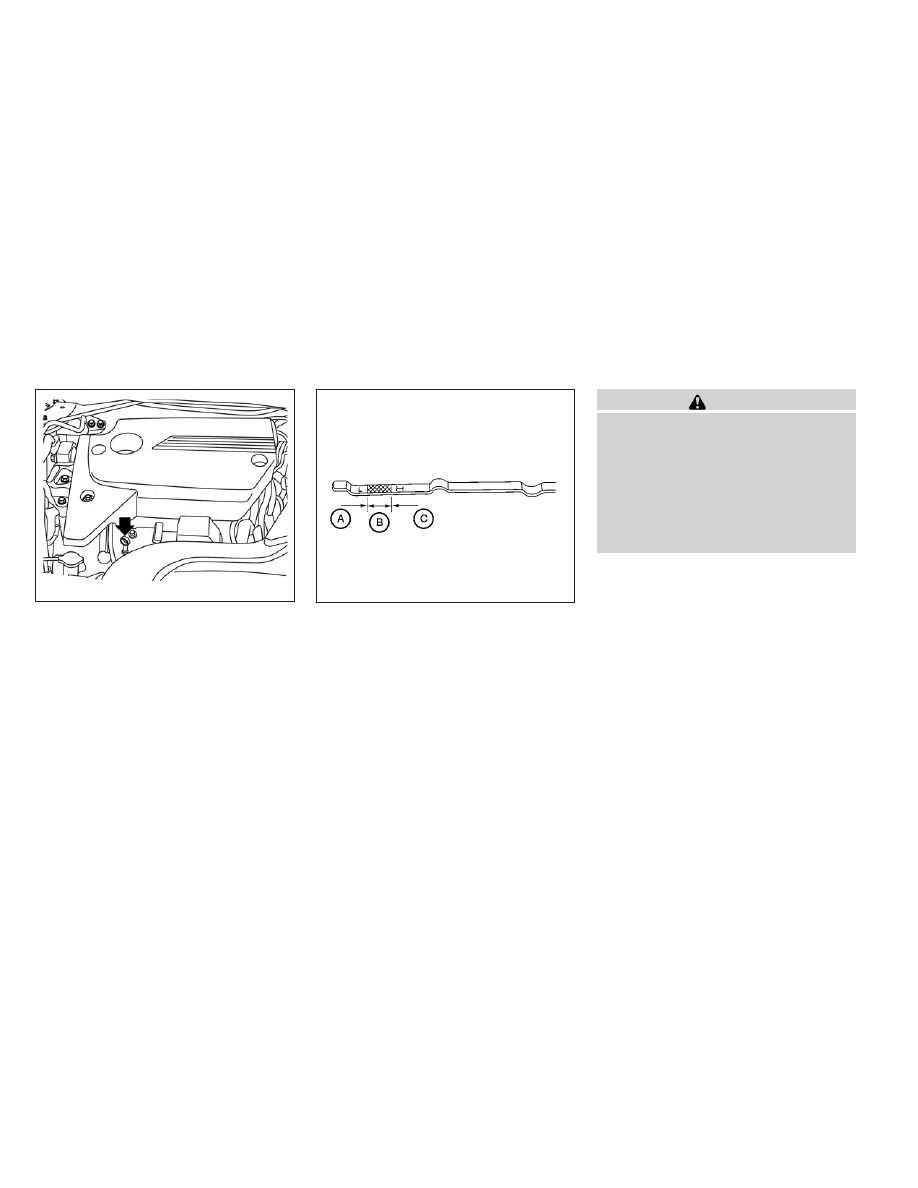Nissan Altima Coupe (2013 year). Manual - part 22

CHECKING ENGINE OIL LEVEL
1. Park the vehicle on a level surface and apply
the parking brake.
2. Start the engine and let it idle until it reaches
operating temperature.
3. Turn off the engine. Wait more than 10
minutes for the oil to drain back into
the oil pan.
4. Remove the dipstick and wipe it clean. Re-
insert it all the way.
5. Remove the dipstick again and check the oil
level. It should be between the H (High) and
L (Low) marks
䊊
B
. This is the normal oper-
ating oil level range. If the oil level is below
the L (Low) mark
䊊
A
, remove the oil filler cap
and pour recommended oil through the
opening. Do not overfill
䊊
C
.
6. Recheck oil level with the dipstick.
It is normal to add some oil between oil
maintenance
intervals
or
during
the
break-in period, depending on the severity
of operating conditions.
CAUTION
● Oil level should be checked regularly.
Operating the engine with an insuffi-
cient amount of oil can damage the
engine, and such damage is not cov-
ered by warranty.
● It is normal to add some oil between oil
maintenance intervals or during the
break-in period, depending on the se-
verity of operating conditions.
CHANGING ENGINE OIL
1. Park the vehicle on a level surface and apply
the parking brake.
2. Start the engine and let it idle until it reaches
operating temperature, then turn it off.
3. Remove the oil filler
䊊
A
cap by turning it
counterclockwise.
4. Place a large drain pan under the drain plug
䊊
B
.
QR25DE engine
LDI2120
WDI0214
ENGINE OIL
Maintenance and do-it-yourself
8-9